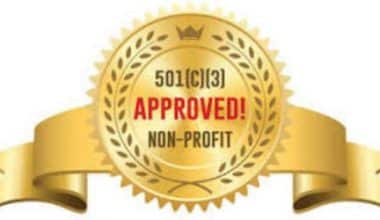If you’re part of a business entity, it’s beneficial to have a comprehensive knowledge of different tax forms. It helps your business stay tax-compliant since you know the requirements and deadlines to prepare.
In this case, the K-1 Form is a significant tax document for business entities since it reports their income, losses, and dividends for the tax year. Each entity will have its own requirements and implications for filing. To know more about how the K-1 Tax Form works, read more below.
What is the K-1 Tax Form?
A Schedule K-1 Tax Form reports a business entity’s income, losses, and dividends for a particular tax year. While it reports beneficiaries’ income distributions from their trusts and estates.
Since pass-through entities don’t pay corporate tax on their income, partnerships, limited liability corporations (LLCs), S corporations, and beneficiaries of estates and trusts must file a Schedule K-1 Form. They also issue forms for each partner, stakeholder, or beneficiary in their entity.
Although individual taxpayers aren’t required to file a K-1 Form, you can still use the information you receive on your personal tax return.
Does a K-1 affect someone’s personal taxes?
Although a K-1 isn’t considered income, it can affect your personal taxes by increasing your tax liability if your K-1 is associated with an income. But note that each type of income will be taxed at different rates or subject to specific tax treatment.
However, since a K-1 income is subject to state or local tax, this might increase your tax bill depending on the amount of your declared income.
Contrarily, a K-1 can result in a tax deduction if it represents a loss, significant expense, or credit. You may then use these losses to lower your tax liability for the year.
Do all business entities schedule the same K-1 Form?
Although the purpose of a K-1 Form remains the same for all business entities, there may be slight variations in the preparation process depending on the type of business you’re in.
Partnerships
Since each partner is responsible for paying taxes on the business’ income, they must file their own Schedule K-1 Form. This includes reporting their share of income, losses, deductions, and credits for the tax year and attaching it to Form 1065 of the entity’s tax return.
LLCs
Similar to a partnership, the co-owners and partners of an LLC are responsible for filing their individual K-1 Forms. This involves declaring their income, losses, deductions, and credits and attaching it to Form 1120-S – the entity’s tax return.
However, this only applies if you’ve elected to be treated as an S corp by the Internal Revenue Service (IRS). But if you’ve chosen to be treated as a C corp, your entity won’t need to file a Schedule K-1 since it will pay corporate tax.
S corporations
Shareholders of an S corporation are still responsible for filing their individual K-1 Forms. This entails reporting their individual income, deductions, losses, and credits and attaching it to their Form 1120-S.
The shareholders may then use the information on their K-1 to report on their personal tax returns.
Estates and trusts beneficiaries
For beneficiaries of trusts and estates, they’ll need to attach their Schedule K-1 to their Form 1041. Depending on the estate or trust, some trusts pay the income tax they earn instead of passing it through the beneficiaries. However, some pass the income directly to the beneficiaries.
If you’re lucky, you can be part of trusts and estates that combine both, depending on their income.
How to file a Schedule K-1 Form
The Schedule K-1 Tax Form is broken into three parts. The first part asks for information about the entity, particularly about the employer’s identification number (EIN), address, and location of the IRS where the entity was formed.
Part two asks for information about the partner, shareholder, or beneficiary of the entity. It asks for details on their social security number, address, role in the entity, profits, losses, and deductions. Part three asks for their current income, credits, deductions, and losses.
What happens if you don’t file a K-1?
Failure of business entities to file a Schedule K-1 Form may result in penalties. If you’re a partner, shareholder, or beneficiary who didn’t receive a K-1 Form, let your entity or fiduciary know so they can provide one.
If you couldn’t file on time, you may file for an extension through Form 4868. By submitting it, you’ll receive six months of extension for the due date of your tax form. Note that the paperwork deadline may be extended; the due date for paying the owed taxes is still promptly expected during tax season.
Need help with preparing your taxes?
If you need help with filing your business taxes, Lear and Pannepacker can assist. They have a team of professional accountants experienced in various industries, ensuring your finances are in good hands. They also offer bookkeeping, auditing, financial planning, and budgeting services to address your financial needs. For questions or inquiries, visit their website for more information.






